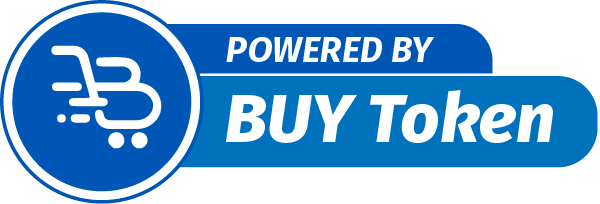In all cases, net Program Fees must be paid in full (in US Dollars) to complete registration. Updates to your application and enrollment status will be shown on your account page. We confirm enrollment eligibility within one week of your application. HBS Online does not use race, gender, ethnicity, or any protected class as criterion for admissions for any HBS Online program. Our easy online application is free, and no special documentation is required. All applicants must be at least 18 years of age, proficient in English, and committed to learning and engaging with fellow participants throughout the program.
Incorporating HighRadius AI-based accounts reconciliation into your financial processes can significantly streamline operations and improve accuracy. By leveraging the AI algorithms, you can automate the matching process, freeing up valuable time for finance teams to analyze discrepancies https://sevport.com/contacts and resolve exceptions promptly. These AI systems continuously learn from historical data, adapting to changing reconciliation patterns and enhancing accuracy over time. As with assets, liabilities can be classified as either current liabilities or non-current liabilities.
What is the purpose of the balance sheet?
These include our video training, visual tutorial, flashcards, cheat sheet, quick test, quick test with coaching, business forms, and more. According to the equation, a company pays for what it owns (assets) by borrowing money as a service (liabilities) or taking from the shareholders or investors (equity). Shareholders’ equity refers generally to the net worth of a company, and reflects the amount of money that would be left over if all assets were sold and liabilities paid. Shareholders’ equity belongs to the shareholders, whether they be private or public owners. Subtracting total liabilities from total assets, Walmart had a large positive shareholders’ equity value, over $83.2 billion.
This is the perfect template for short-term analysis of fiscal health but can be used for year-over-year monthly and quarterly comparisons. In conclusion, understanding balance sheets is essential for anyone interested in assessing a company’s financial health. By examining the components of a balance sheet and learning how to analyze it, you can make informed decisions and better understand the financial health of a company. The balance sheet is just a more detailed version of the fundamental accounting equation—also known as the balance sheet formula—which includes assets, liabilities, and shareholders’ equity. In this example, the imagined company had its total liabilities increase over the time period between the two balance sheets and consequently the total assets decreased. Overall, a balance sheet is an important statement of your company’s financial health, and it’s important to have accurate balance sheets available regularly.
How to Read a Balance Sheet
Keep day-to-day tabs on your assets, liabilities, equity, and balance with this easy-to-use, daily balance sheet template. Enter your total current, fixed, and other assets, total current and long-term liabilities, and total owner’s equity, and the template will automatically calculate your up-to-the-minute balance. You can save this daily balance sheet template as individual files — with customized entries — for each day requiring balance insights for any 24-hour period. Use this simple, easy-to-complete balance sheet template to determine your overall financial outlook.
- External auditors, on the other hand, might use a balance sheet to ensure a company is complying with any reporting laws it’s subject to.
- Assets are typically categorized as current assets (those that can be converted into cash within a year) and non-current assets (those that are expected to be held for more than a year).
- For example, a positive change in plant, property, and equipment is equal to capital expenditure minus depreciation expense.
- On the basis of such evaluation, they anticipate the future performance of the company in terms of profitability and cash flows and make much important economic decisions.
- It is unsuitable for submitting to Companies House but will enable small businesses to produce a report for their year-end.
Equity can also drop when an owner draws money out of the company to pay themself, or when a corporation issues dividends to shareholders. This account includes the amortized amount of any bonds the company has issued. Retained earnings are the net earnings a company either reinvests in the http://www.m-design.kz/news/noviy-windows-ot-microsoft business or uses to pay off debt. The remaining amount is distributed to shareholders in the form of dividends. We’re firm believers in the Golden Rule, which is why editorial opinions are ours alone and have not been previously reviewed, approved, or endorsed by included advertisers.
How to Prepare a Balance Sheet: 5 Steps for Beginners
This financial statement lists everything a company owns and all of its debt. A company will be able to quickly assess whether it has borrowed too much money, whether the assets it owns are not liquid enough, or whether it has enough cash on hand to meet current demands. The Balance Sheet is one of the three financial statements businesses use to measure their financial performance.
It may not provide a full snapshot of the financial health of a company without data from other financial statements. Balance sheets are important because they give a picture of your company’s financial standing. Before getting a business loan or meeting with potential investors, a company has to provide an up-to-date balance sheet.
Template Details
In the account form (shown above) its presentation mirrors the accounting equation. That is, assets are on the left; liabilities and stockholders’ equity are on the right. The assets are made up of fixed and intangible assets, bank, stock and debtors. http://aviaclub.ru/forum/index.php?showtopic=1072 Assets – Fixed Assets, Current Assets, intangible assets, stock, cash, money owed from customers (accounts receivable ledger) and prepayments. Shareholder equity or Owner’s equity is the difference between a company’s assets and liabilities.

